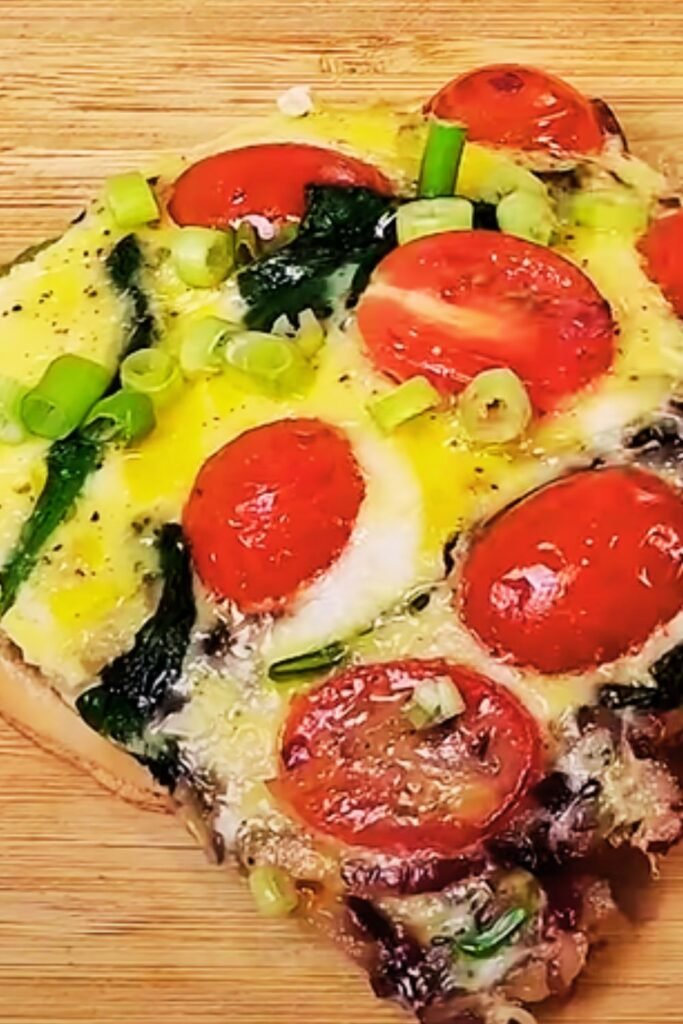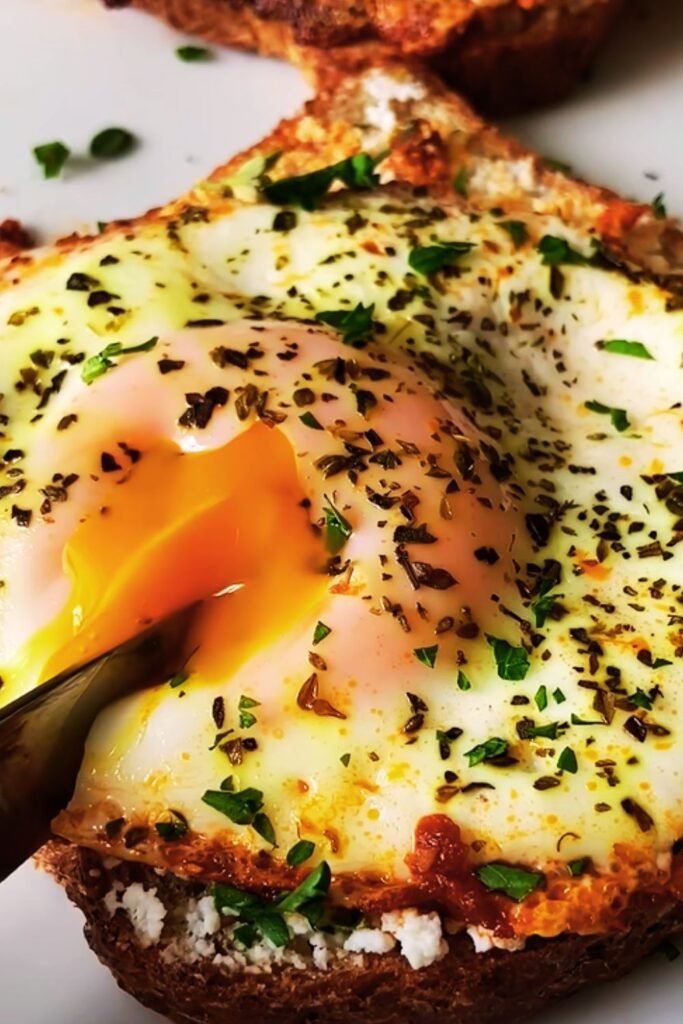There’s something magical about waking up in Barcelona with a pounding headache and discovering that the cure for your ailments comes in the form of crusty bread, ripe tomatoes, and perfectly scrambled eggs. I’ve spent countless mornings in Spanish cafés, watching locals effortlessly prepare what I now consider the ultimate hangover breakfast: Pan con Tomate paired with creamy scrambled eggs.
This isn’t just any breakfast – it’s a time-honored Catalan tradition that transforms simple ingredients into something extraordinary. The combination of garlic-rubbed bread, fresh tomato pulp, golden olive oil, and fluffy scrambled eggs creates a symphony of flavors that not only soothes your troubled stomach but also reconnects you with the vibrant Spanish culture.
Understanding the Spanish Hangover Breakfast Culture
In Spain, breakfast isn’t rushed. Even when you’re nursing a hangover, the Spanish approach to morning meals emphasizes quality over speed. This breakfast represents the perfect marriage of Catalan tradition and practical nutrition – exactly what your body craves after a night of celebration.
Key Components Defined
Pan con Tomate (Pa amb Tomàquet) : The cornerstone of Catalan cuisine, consisting of toasted bread rubbed with garlic and fresh tomato, then drizzled with olive oil and seasoned with salt
Scrambled Eggs (Huevos Revueltos) : Slowly cooked eggs with a creamy, custard-like consistency, often prepared with minimal ingredients to let the egg flavor shine
Spanish Olive Oil : Extra virgin olive oil, preferably from Spanish olives, providing the rich, fruity base that ties all flavors together
Jamón Ibérico : Optional but traditional cured ham that adds saltiness and depth to the meal
The Science Behind This Hangover Cure
What makes this breakfast so effective for hangovers goes beyond mere comfort food. The combination of ingredients works synergistically to address multiple hangover symptoms:
The bread provides complex carbohydrates that help stabilize blood sugar levels, while the tomatoes deliver vitamin C and lycopene – powerful antioxidants that combat inflammation. The eggs contribute high-quality protein and B vitamins, essential for metabolizing alcohol residues. Meanwhile, the olive oil supplies healthy fats that aid in nutrient absorption and provide sustained energy.
Essential Ingredients and Their Selection
The Bread Foundation
Choosing the right bread makes or breaks this dish. I always look for:
- Artisanal sourdough or country-style bread with a thick, crusty exterior
- Day-old bread works perfectly – it’s sturdy enough to handle the tomato treatment
- Avoid soft sandwich breads that become soggy
- Slice thickness should be about ¾ inch to 1 inch
Tomato Selection Mastery
The tomatoes are the soul of this dish. Here’s what I’ve learned about selecting them:
- Mature, ripe tomatoes with deep red color and slight give when pressed
- Roma or plum tomatoes work exceptionally well due to their meaty texture
- Avoid overripe tomatoes that fall apart during grating
- Room temperature tomatoes provide the best flavor

Olive Oil Quality Matters
Spanish olive oil elevates this breakfast from good to extraordinary:
- Extra virgin olive oil from Spanish regions like Andalusia or Catalonia
- Look for cold-pressed varieties with robust flavor
- Picual or Arbequina olive varieties complement the tomato perfectly
- Store in a cool, dark place to preserve flavor
Egg Excellence
The eggs deserve special attention:
- Farm-fresh eggs with bright orange yolks
- Free-range eggs provide superior taste and texture
- Large eggs work best for proper scrambling technique
- Room temperature eggs scramble more evenly
Preparation Techniques: Step-by-Step Mastery
Preparing the Perfect Pan con Tomate
- Toast the bread until golden brown and crispy on the outside but still soft inside
- Rub with garlic – take a peeled garlic clove and rub it across the warm toast surface
- Grate the tomato using a box grater, discarding the skin
- Spread tomato pulp generously across the garlic-rubbed bread
- Drizzle with olive oil – be generous, this isn’t the time to be conservative
- Season with sea salt and freshly ground black pepper
Scrambled Eggs: The Spanish Way
Spanish scrambled eggs differ significantly from their American counterparts. The technique focuses on slow cooking and constant movement:
- Heat a non-stick pan over very low heat
- Add a generous amount of olive oil – about 2 tablespoons for 4 eggs
- Whisk eggs thoroughly with a pinch of salt
- Pour eggs into the warm oil and immediately start stirring
- Stir constantly with a wooden spoon or spatula
- Cook slowly – the process should take 8-10 minutes
- Remove from heat while still slightly wet – they’ll continue cooking
Nutritional Breakdown and Health Benefits
| Nutrient | Amount per Serving | % Daily Value | Health Benefit |
|---|---|---|---|
| Calories | 485 | 24% | Sustained energy release |
| Protein | 18g | 36% | Muscle recovery and satiety |
| Healthy Fats | 28g | 43% | Brain function and hormone production |
| Carbohydrates | 42g | 14% | Blood sugar stabilization |
| Fiber | 4g | 16% | Digestive health |
| Vitamin C | 25mg | 28% | Immune system support |
| Vitamin E | 6mg | 40% | Antioxidant protection |
| Folate | 85mcg | 21% | Cellular repair |
| Selenium | 22mcg | 40% | Liver detoxification |
Regional Variations Across Spain
Catalonia: The Original
In Catalonia, where this dish originated, the focus remains on simplicity. The traditional approach uses only bread, tomato, garlic, olive oil, and salt. Some Catalans add a thin slice of jamón ibérico or manchego cheese.
Andalusia: The Generous Version
Andalusian versions often include additional ingredients like:
- Thinly sliced Spanish onions
- Roasted red peppers
- Anchovies or cured olives
- A sprinkle of smoked paprika
Valencia: The Hearty Approach
Valencians sometimes add:
- Grilled vegetables
- Spanish chorizo
- Fried potatoes
- Fresh herbs like parsley or oregano

Timing and Serving Suggestions
The Perfect Breakfast Timeline
Preparation Time: 15 minutes Cooking Time: 20 minutes Total Time: 35 minutes Serves: 2-3 people
Serving Recommendations
This breakfast pairs beautifully with:
- Café con leche – Spanish coffee with warm milk
- Fresh orange juice – preferably from Valencia oranges
- Herbal tea like manzanilla (chamomile) for sensitive stomachs
- Sparkling water with a slice of lemon
Presentation Tips
- Serve on warmed plates to maintain temperature
- Arrange the pan con tomate alongside the scrambled eggs
- Garnish with fresh herbs like chives or parsley
- Provide extra olive oil on the side for drizzling
Advanced Techniques for Perfection
Temperature Control Mastery
The key to exceptional results lies in temperature management:
For the bread: Toast at medium-high heat for 2-3 minutes per side For the eggs: Maintain low heat throughout the scrambling process For serving: Warm plates in a 200°F oven for 2 minutes before plating
Texture Considerations
- Bread texture: Crispy outside, tender inside
- Tomato application: Juicy but not watery
- Egg consistency: Creamy and just set
- Overall mouthfeel: Balanced between crispy and creamy elements
Troubleshooting Common Mistakes
Soggy Bread Solutions
If your bread becomes soggy:
- Use day-old bread instead of fresh
- Toast longer for extra crispness
- Drain excess liquid from grated tomatoes
- Serve immediately after assembly
Overcooked Eggs Prevention
Avoid rubber-like eggs by:
- Using very low heat throughout cooking
- Removing from heat while slightly underdone
- Adding a tablespoon of cream for extra richness
- Stirring constantly to prevent sticking
Flavor Enhancement Tips
To elevate the dish:
- Use flaky sea salt instead of table salt
- Add a touch of sherry vinegar to the tomatoes
- Include fresh herbs like basil or oregano
- Finish with a drizzle of the finest olive oil
Make-Ahead Strategies
Prep-Ahead Components
Tomato mixture: Grate tomatoes up to 2 hours ahead, store covered in refrigerator Bread preparation: Toast bread and store in airtight container for up to 1 day Garlic treatment: Rub garlic on toast just before serving for best flavor
Storage Guidelines
| Component | Storage Method | Duration | Quality Notes |
|---|---|---|---|
| Grated tomatoes | Refrigerated, covered | 2 hours | Best flavor when fresh |
| Toasted bread | Room temperature, airtight | 1 day | Reheat briefly before serving |
| Scrambled eggs | Not recommended | N/A | Serve immediately |
| Olive oil mixture | Room temperature | 1 week | Flavors meld over time |
Seasonal Adaptations
Summer Variations
During peak tomato season:
- Use heirloom tomatoes for complex flavors
- Add fresh basil leaves
- Include cucumber for extra freshness
- Serve at room temperature
Winter Modifications
When fresh tomatoes aren’t ideal:
- Use high-quality canned San Marzano tomatoes
- Add roasted red peppers for sweetness
- Include caramelized onions for depth
- Serve warm for comfort

Cultural Significance and Dining Etiquette
Spanish Breakfast Culture
In Spain, breakfast is typically lighter than in other countries, but this hangover cure represents an exception. It’s commonly enjoyed on weekend mornings, especially after social gatherings. The meal encourages slow eating and conversation – essential elements of Spanish food culture.
Proper Dining Etiquette
- Eat with fork and knife – avoid picking up the bread with your hands
- Take your time – rushing through this meal defeats its purpose
- Share the experience – this breakfast is meant to be social
- Appreciate the ingredients – comment on the quality of the olive oil or tomatoes
Pairing with Spanish Breakfast Traditions
Additional Spanish Breakfast Items
To create a complete Spanish breakfast experience, consider adding:
Tostada con Mantequilla y Mermelada : Buttered toast with Spanish fruit preserves
Magdalenas : Small Spanish sponge cakes, similar to madeleines
Churros con Chocolate : Fried dough sticks with thick hot chocolate (for special occasions)
Membrillo con Queso : Quince paste with Manchego cheese
Equipment and Tools
Essential Kitchen Equipment
| Tool | Purpose | Recommendation |
|---|---|---|
| Box grater | Grating tomatoes | Four-sided with large holes |
| Non-stick pan | Scrambling eggs | Heavy-bottomed for even heat |
| Wooden spoon | Stirring eggs | Prevents scratching non-stick surface |
| Toaster/Grill pan | Toasting bread | Consistent browning |
| Sharp knife | Garlic preparation | Clean cuts without crushing |
Optional but Helpful Tools
- Microplane grater for finer garlic grating
- Ceramic serving plates that retain heat
- Small pitcher for olive oil serving
- Pepper mill for fresh black pepper
Health Considerations and Modifications
Dietary Adaptations
Gluten-Free Version : Use gluten-free artisanal bread, ensuring it’s sturdy enough for the tomato treatment
Dairy-Free Modification : Skip any butter additions and use only olive oil
Lower-Calorie Option : Use egg whites instead of whole eggs, reduce olive oil slightly
Vegan Alternative : Replace eggs with scrambled tofu seasoned with nutritional yeast
Nutritional Enhancements
To boost the nutritional profile:
- Add spinach or arugula to the scrambled eggs
- Include avocado slices for healthy fats
- Sprinkle hemp seeds for extra protein
- Use whole grain bread for additional fiber
The Art of Spanish Olive Oil
Understanding Spanish Olive Oil Varieties
Picual : Robust, peppery flavor with high antioxidant content
Hojiblanca : Fruity and slightly bitter, perfect for bread dishes
Arbequina : Mild and sweet, ideal for those new to Spanish olive oils
Cornicabra : Complex flavor with hints of green apple and herbs
Tasting and Selection Tips
When selecting Spanish olive oil:
- Look for harvest dates within the past year
- Choose dark glass bottles to protect from light
- Consider single-variety oils for distinct flavors
- Store properly to maintain quality
Q&A Section
Q. What makes this breakfast specifically good for hangovers?
The combination of ingredients works synergistically to address hangover symptoms. The bread provides complex carbohydrates that stabilize blood sugar, while tomatoes deliver vitamin C and antioxidants to combat inflammation. The eggs contribute B vitamins essential for metabolizing alcohol, and olive oil provides healthy fats for sustained energy. Together, these ingredients help rehydrate, nourish, and restore your body’s balance.
Q. Can I use any type of bread for pan con tomate?
While you can experiment, the bread choice significantly impacts the final result. I recommend using day-old artisanal sourdough or country-style bread with a thick crust. The bread needs to be sturdy enough to handle the tomato treatment without becoming soggy. Avoid soft sandwich breads or overly dense breads that won’t absorb the flavors properly.
Q. How do I know if my tomatoes are ripe enough?
Perfect tomatoes for this dish should have deep red color, give slightly when pressed, and feel heavy for their size. They should smell fragrant at the stem end. Avoid tomatoes that are overly soft or have any dark spots. Room temperature tomatoes provide the best flavor, so remove them from the refrigerator about 30 minutes before preparation.
Q. Why do Spanish scrambled eggs take so long to cook?
The slow cooking method is intentional and creates a completely different texture than quick-scrambled eggs. By cooking over very low heat and stirring constantly, the eggs develop a creamy, custard-like consistency that’s incredibly rich and satisfying. This technique requires patience but produces superior results that complement the pan con tomate perfectly.
Q. Can I prepare any components ahead of time?
You can grate the tomatoes up to 2 hours ahead and store them covered in the refrigerator. The bread can be toasted and stored in an airtight container for up to one day. However, the garlic rubbing should be done just before serving for the best flavor, and the eggs must be scrambled fresh and served immediately.
Q. What’s the difference between this and regular toast with tomatoes?
The key differences lie in technique and tradition. Spanish pan con tomate uses specific methods: rubbing raw garlic on warm toast, grating fresh tomatoes rather than slicing them, and using high-quality Spanish olive oil as a crucial flavor component. The proportions and preparation method create a completely different taste experience than simply putting tomato slices on toast.
Q. How much olive oil should I use?
Don’t be conservative with the olive oil – it’s a main ingredient, not just a cooking medium. Use about 2 tablespoons for the scrambled eggs and generously drizzle the pan con tomate. The oil should penetrate the bread and mix with the tomato pulp to create a flavorful base. High-quality Spanish olive oil makes a significant difference in the final taste.
Q. Can I make this breakfast for a larger group?
Absolutely! The recipe scales up easily. For larger groups, I recommend preparing the pan con tomate assembly-line style, with one person handling the bread toasting and garlic rubbing while another manages the tomato grating. Keep the scrambled eggs cooking in batches to maintain the proper texture, and serve immediately as each batch finishes.
Q. What should I do if I don’t have Spanish olive oil?
While Spanish olive oil is ideal, you can substitute high-quality extra virgin olive oil from other regions. Look for oils with robust flavor rather than mild varieties. Italian oils from Tuscany or Greek oils can work well, though they’ll create a slightly different flavor profile. The key is using the best quality oil available to you.
Q. Is this breakfast suitable for people with sensitive stomachs?
Yes, this breakfast is generally gentle on sensitive stomachs, which is part of why it works so well for hangovers. The ingredients are simple and easy to digest. If you have specific sensitivities, you can modify the recipe by reducing the garlic, using less acidic tomatoes, or adding a small amount of milk to the scrambled eggs for extra creaminess.
This Spanish hangover breakfast represents more than just a meal – it’s a cultural experience that transforms simple ingredients into something restorative and deeply satisfying. The combination of traditional Catalan pan con tomate with perfectly scrambled eggs creates a breakfast that not only cures your hangover but also connects you with centuries of Spanish culinary tradition.
I’ve made this breakfast countless times, and each preparation teaches me something new about the importance of quality ingredients and proper technique. Whether you’re recovering from a night out or simply want to experience authentic Spanish flavors, this breakfast delivers comfort, nutrition, and pure satisfaction in every bite.
The beauty of this dish lies in its simplicity and the way each component enhances the others. The crispy, garlic-rubbed bread provides texture, the fresh tomato adds brightness, the olive oil contributes richness, and the creamy eggs bring it all together. It’s a perfect example of how Spanish cuisine elevates humble ingredients into something extraordinary.
Take your time with this breakfast. Savor each bite, appreciate the quality of your ingredients, and embrace the Spanish approach to morning meals. Your body will thank you, and your taste buds will be forever changed by this authentic taste of Spain.